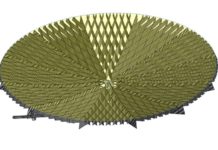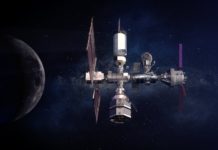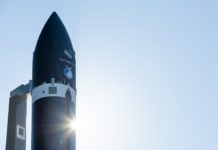NASA and Japan’s space agency, the Japan Aerospace Exploration Agency (JAXA), have announced plans to continue collaborating on space exploration missions.
In a press conference held at JAXA headquarters yesterday, the two space agencies listed a number of projects they would cooperate on, including two upcoming JAXA-led missions.
The first is JAXA’s Martian Moons Exploration (MMX) mission, which will send an orbiter and lunar lander to Mars in order to study Martian moons Phobos and Deimos. In a meeting between NASA and JAXA’s Institute for Space and Astronautical Sciences (ISAS), associate administrator of NASA’s Science Mission Directorate Thomas Zurbuchen agreed to explore options for NASA’s contribution to the MMX mission. A possible contribution would be a neutron and gamma-ray spectrometer, which will add to payloads contributed by France’s space agency, the Centre National d’Etudes Spatiales, as agreed upon earlier this year.
NASA and JAXA also agreed to work toward an X-ray Astronomy Recovery Mission (XARM), a JAXA X-ray astronomy satellite project that will replace Japan’s failed Hitomi X-ray spectrometry spacecraft. Planned for launch in 2021, the spacecraft will carry NASA’s Soft X-ray Spectroscopy, and will contribute to the study of the structure and evolution of the universe, dark matter, gravitational fields, and cosmic-ray acceleration. This NASA-JAXA cooperation on XARM, along with minor participation from the European Space Agency (ESA), was announced earlier this year and reaffirmed yesterday by NASA.
NASA also expressed commitment towards continued cooperation on JAXA’s Venus Climate Orbiter Akatsuki and its Hisaki (SPRINT-A) ultraviolet astronomy satellite.
Other collaborations include JAXA participation in the NASA-led CLASP-2 project, a sounding rocket mission to study the magnetic field in the chromosphere and transition region of the sun’s atmosphere. Both agencies will also exchange specimens from the OSIRIS-REx and Hayabusa 2 asteroid sample return missions, as codified in a 2014 Memorandum of Understanding (MoU) between the two.
Said Zurbuchen, ““From its inception, NASA’s mission to unravel the secrets of the universe has included efforts to engage in international partnerships. Today we reaffirm a cooperative endeavor that stretches back nearly six decades and spans across disciplines that include Earth science, human spaceflight, interplanetary probes and astronomy.”







